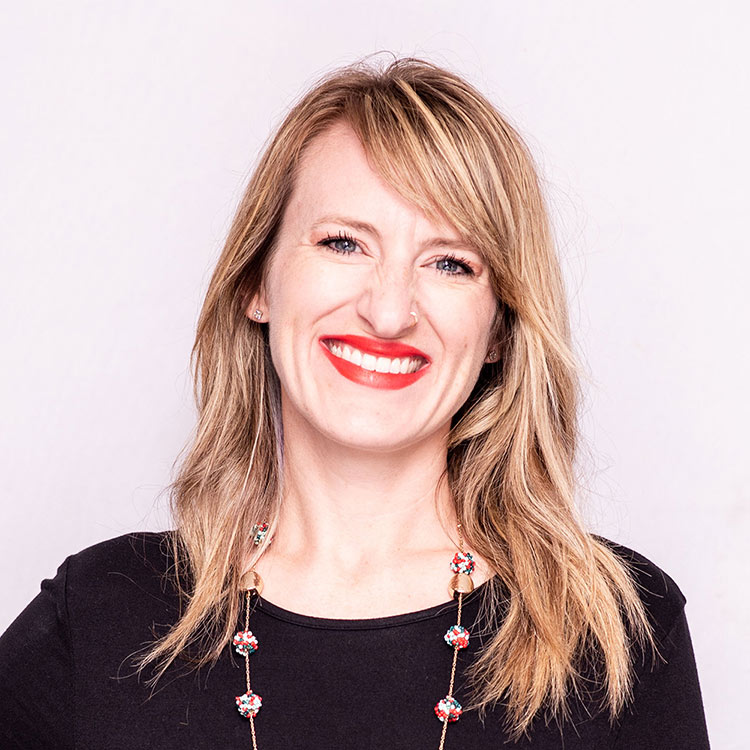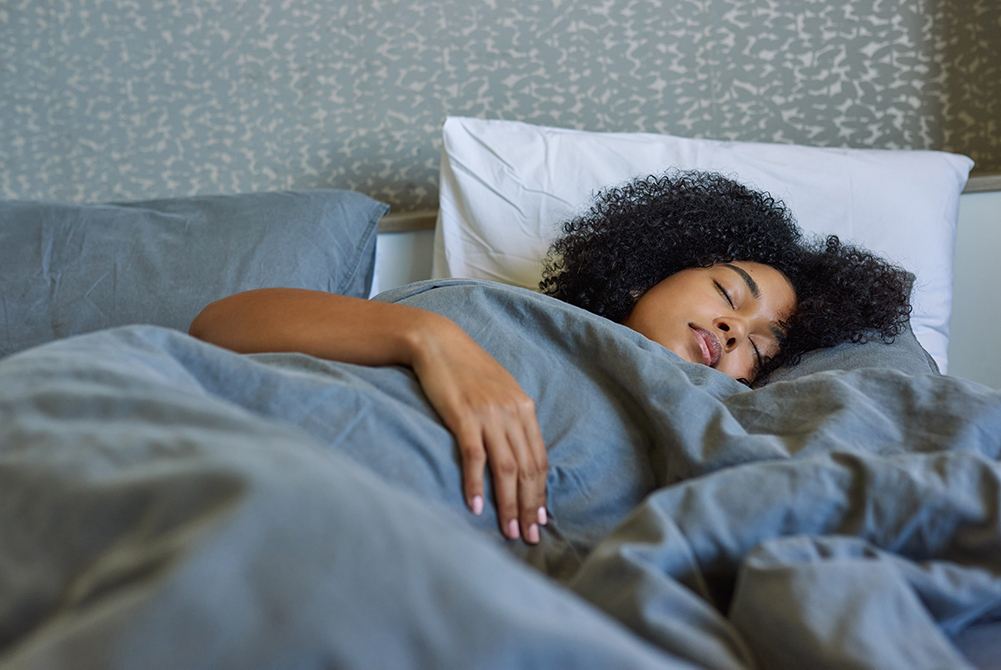
Key Takeaways
- Side sleeping is often considered the healthiest sleeping position, but what’s best for you will vary depending on your unique needs and preferences.
- According to one survey, the most popular sleep position is side sleeping (54 percent of the population), followed by back sleeping (37 percent of the population), and finally, stomach sleeping (7 percent of the population).
- Sleeping on your side is typically best for reducing snoring, and improving digestion, and for those who are pregnant.
- Sleeping on your back or side is typically best for those with back or neck pain and those dealing with nasal congestion.
- Sleeping on your stomach can help reduce snoring, but can cause neck and back pain due to poor spine alignment.
- The right pillow and mattress can significantly improve sleep quality by supporting optimal sleep posture.
When you’re trying to get a better night’s sleep, you might think more about upgrading your mattress or bedding before you consider the best sleeping position. But believe it or not, your sleeping position can play a big role in how you sleep — and how you feel when you wake up! Keep reading to learn which sleeping position may be best for you.
Note: The content on Sleepopolis is meant to be informative in nature, but it shouldn’t be taken as medical advice, and it shouldn’t take the place of medical advice and supervision from a trained professional. If you feel you may be suffering from any sleep disorder or medical condition, please see your healthcare provider immediately.
What Is the Best Sleeping Position?
Though the best sleeping position is at least partially subjective — everybody is going to have their own sleep preferences and needs — many sleep experts agree sleeping on your side or your back is likely best. (1)(2)
Kevin Lees, DC of The Joint Chiropractic, told Sleepopolis that sleeping in the back or side positions is most likely to support your spine — leaving you waking up refreshed. However, sleep position is nuanced, and researchers haven’t conclusively decided that one way is best for everyone. (1)
He says, “When you sleep on your back, you’re halfway to a perfect night’s rest.” However, adding in knee support brings restfulness to a whole new level, allowing for an even distribution of weight and healthier spinal alignment. “If you just slip a small pillow behind your knees to help give them some extra support and take the pressure off of your spine, then you’ve got a real winner in the healthy sleeping position category.”
Lees adds that side sleeping can also be great as long as you have hip support. “Slip a pillow between your knees and make sure you have a pillow that is supporting your head and neck properly.” Doing this will help your body stay in a healthy alignment all night.
The Importance of Choosing the Proper Sleeping Position
Choosing the right sleeping position is essential because it influences spinal alignment, comfort, and overall sleep quality in a variety of ways. For instance, different positions affect pressure distribution across your whole body. (3)
Sleeping on your back supports a neutral spine, which can reduce neck and back pain (assuming you also have a supportive pillow and mattress, which we’ll get to later). (2)(3) Side sleeping can relieve snoring and is often recommended for pregnancy, but it may contribute to waking up with stiff shoulders. (4)(5) Meanwhile, sleeping on your stomach can put a strain on your neck and spine, which could potentially leave you feeling painful effects in the morning. (6)
With all of that being said, what works best for someone else may not always be best for you. Let’s explore each sleeping position further, including the pros, cons, and how to try them out.
Side Sleeping
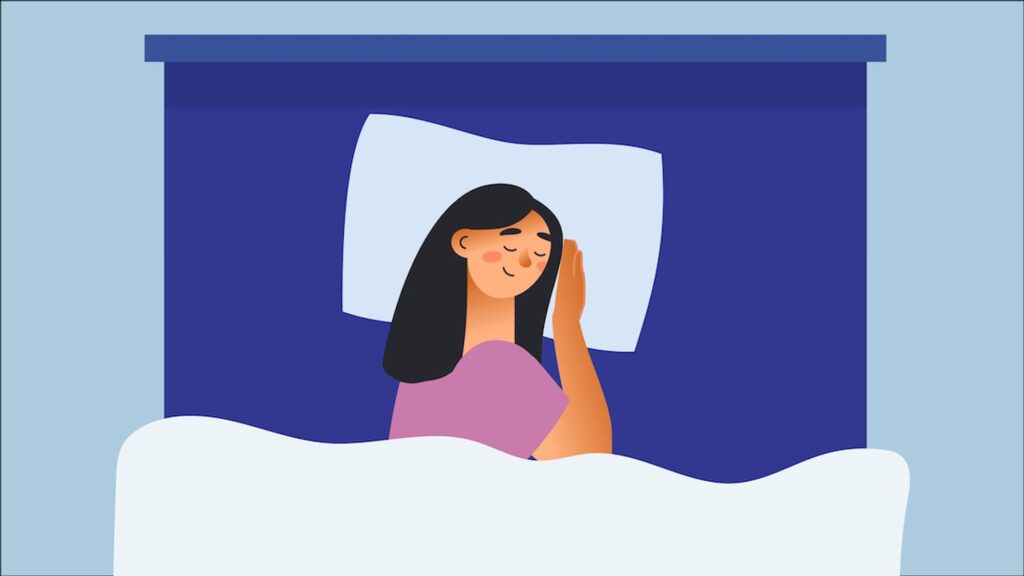
Out of all possible configurations, side sleeping is the most popular sleeping position by far. The latest research shows that over 50 percent of the population prefers side sleeping. (7) This makes sense when you examine the benefits of snoozing on your side.
But first, who benefits most from sleeping on their side? Here are some groups who may find side sleeping most comfortable: (4)(5)(8)(1)
- People who snore or have sleep apnea (although sometimes back is best for sleep apnea)
- Pregnant women, especially later in the pregnancy
- People with acid reflux
- Individuals who suffer from lower back pain
Benefits of Side Sleeping
In addition to being a good sleeping position for your spine, side sleeping may help reduce lower back pain and pressure, digestive issues, and trouble breathing for some people. More on all that below.
One of the primary arguments for sleeping on your side is that it helps optimize your spinal alignment. When your spine can stay in a neutral position for most of the night, you’re less likely to wake up with pain and stiffness. (1)(2)
Side sleeping has also been shown to help improve breathing problems for some people. If you snore or have sleep apnea, side sleeping helps keep your airways open, reducing symptoms and promoting easier breathing. One smaller 2019 study showed that while a CPAP (continuous positive airway pressure) machine is still the gold standard for treating sleep apnea, positional therapy, AKA sleeping on your side, has its merits. (9)(10)
If you have digestive issues, such as acid reflux, left-side sleeping is particularly beneficial, as some research suggests that right-side sleeping can worsen reflux issues. (11)(12) This is because positioning your body on the left allows gravity to keep stomach acid from flowing back into your esophagus and causing heartburn. This sleeping position can also help assist food movement through the intestines, further supporting digestion. (11)
Side sleeping, especially with a pillow between your knees, can also help alleviate lower back pressure. This is especially helpful for people who deal with lower back pain during the day or find that their back pain is worse when they wake up. (1)
This position is also great for pregnant women, as left-side sleeping alleviates back and hip pain, can improve circulation to the heart, and reduces pressure on the liver. (13)
Cons of Side Sleeping
While side sleeping has numerous benefits, it’s not necessarily going to be comfortable for everyone and may even have downsides.
One common issue is that sleeping on one side can put excess pressure on the shoulder and hip you’re sleeping on, potentially causing stiffness, soreness, or even rotator cuff injuries. (14)
Over time, chronic side sleepers may also notice wrinkles forming on the side of their face or forehead that contact the pillow as this position keeps the skin pressed against the fabric for long periods. (15)
Additionally, side sleeping could contribute to spinal misalignment if the mattress does not adequately support the body’s curves, which may lead to neck or back discomfort. (16) Those with preexisting shoulder or hip issues might find side sleeping aggravates their pain, making a supportive pillow and mattress essential for a comfortable night’s rest in this position.
How to Sleep on Your Side
Side sleeping may get many votes for “healthiest sleeping position,” but there’s always room for improvement. If you’re not already in the side sleeping camp and want to try it out for yourself, here are some tips to make it a smoother transition:
- Place a pillow between your knees, which helps keep your spine, hips, and pelvis in proper alignment and alleviates extra pressure on the spine.
- Get a mattress that provides plenty of pressure relief to your shoulders and hips.
- Grab a high-loft pillow specifically designed for side sleepers, as inadequate head and neck support in this position can leave you with shoulder pain upon waking.
- Speak with your healthcare provider to make sure side sleeping is appropriate for you
Is it Better to Sleep on Your Left or Right Side?
When sleeping on your side, lying on your left is generally considered more helpful for your health than on your right because of how it supports digestion and reduces acid reflux. (8)
When you sleep in this position, gravity is naturally at work, helping to keep the junction between your stomach and esophagus elevated. This prevents stomach acid from flowing back into your esophagus, which is a relief for heartburn and acid reflux sufferers. Left-side sleeping also helps support your natural digestion process, allowing food contents to move more easily from your stomach and into your intestinal tract. (8)
Sleeping on your left also improves circulation to your heart because it reduces pressure on the vena cava, the large vein that returns blood to your heart.(17)(18) Lees says this is especially important for pregnant women.
Overall, side sleeping is generally considered best, and if possible, choose your left. This isn’t to say that right-side sleeping is bad for you — it just may not offer these same digestive and circulatory advantages. However, if you have heart health concerns or left shoulder injuries, Lees says you might want to try sleeping on your right side.
Sleeping on Your Back
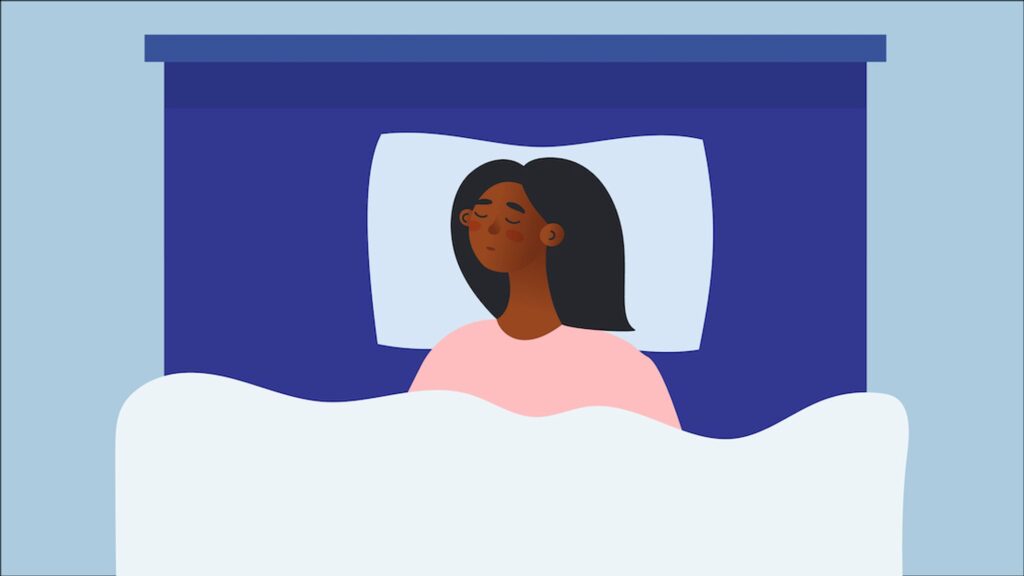
Back sleeping is the second most popular sleeping position, with about 37.5 percent of people choosing the supine position night after night. (7)
Here’s who may benefit the most from back sleeping:
- People who are concerned about premature facial wrinkles (15)
- Those prone to acid reflux and heartburn (19)
- People focused on achieving better spinal alignment (20)
Benefits of Sleeping on Your Back
Sleeping on your back allows your head, neck, and spine to rest in a neutral position by distributing weight more evenly across your body. It also helps eliminate unnatural curves in your spine while sleeping, so you’re less likely to wake up stiff and in pain. (21)
Lees says, “People are less likely to develop painful pressure points when sleeping on their back, and it may also be beneficial for tension headaches and gastric reflux.”
If you’re worried about preventing wrinkles on your face, there’s some evidence to suggest that back sleeping may be beneficial. Sleeping this way minimizes how much contact your face has with your pillow, which reduces pressure on your skin, possibly more than side sleeping would. (15)
However, other research suggests that sleep deprivation is more of a culprit for reducing skin elasticity and creating unwanted lines and creases. If wrinkles are your primary concern, you might be better off sleeping however you’re most comfortable and getting enough sleep rather than worrying about where your face is planted. (22)
Cons of Sleeping on Your Back
While many people find that back sleeping is comfortable and helps alleviate extra pressure in places they don’t want it, it’s not necessarily the best position for everyone to sleep.
One of the main drawbacks is that it can exacerbate snoring and sleep apnea, as gravity pulls the tongue and soft tissues backward, which can potentially obstruct your airway and make it harder to breathe. (20)(23)
Additionally, if you have existing lower back pain, sleeping on your back may actually make it worse, says Lees, even causing hip pain — especially if you don’t have a very firm mattress and your legs aren’t properly supported.
Furthermore, if you’re pregnant, it’s often advised to avoid sleeping on your back as you get deeper into your pregnancy, as this can compress major blood vessels and potentially impact circulation. (13)
How to Sleep on Your Back
Not a back sleeper, but want to be? Here are some tips to make back sleeping more comfortable:
- Get a medium-firm to firm mattress for back sleepers, which provides pressure relief to your lower back while supporting your hips and keeping them aligned with your shoulders. (24)
- Choose a medium loft pillow for your head that doesn’t crane your neck up too far when lying down.
- Place a pillow underneath your knees, as this can help support the natural curvature of your spine.
Sleeping on Your Stomach
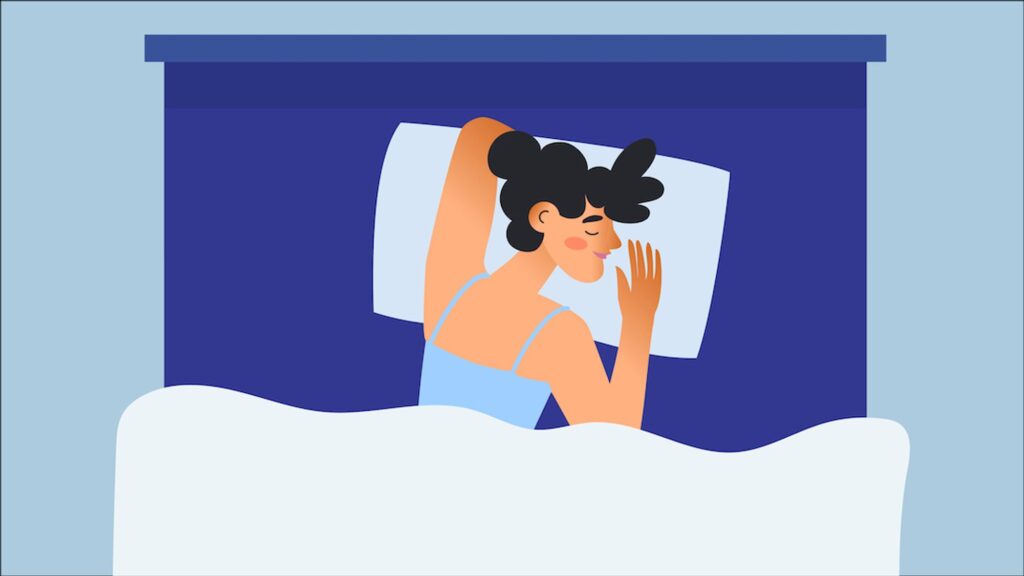
With only about 7 percent of the population lying face down while they sleep, stomach sleeping comes in last on our list. (7)
As for who should avoid sleeping on their stomach, some specific groups include:
- People with existing neck pain
- Individuals who have lower back pain
- Pregnant women
- People who are concerned about facial wrinkles
- Those who have sleep apnea or other breathing issues that disrupt sleep
Benefits of Sleeping on Your Stomach
Unless sleeping on your stomach is comfortable for you, there aren’t any other major benefits to doing so.
However, stomach sleeping could potentially help reduce snoring for some people by keeping airways more open, as gravity pulls the tongue and soft tissues away from the back of the throat. This position might prevent airway obstruction, allowing for quieter and easier breathing during sleep. (25)
Still, Lees says, you should really discuss this sleeping position with your chiropractor or healthcare provider to properly weigh any possible benefits.
Cons of Sleeping on Your Stomach
Stomach sleeping may help reduce snoring, but that doesn’t mean it’s a good position for people who have sleep apnea.
While this sleeping position pulls your tongue forward and reduces the risk of airway collapse, by design, stomach sleeping could cover your face and mouth, which may exacerbate symptoms of severe sleep apnea for some people. (25)
Lees calls this position out as being the worst spinal health position there is. He says this is because it forces you to twist your neck to the side so you can breathe and may cause increased stress on the lower back or twisting in the pelvis. “It puts pressure on your muscles and joints, and that can irritate your spinal nerves, leading to pain and discomfort when you wake up.”
How to Sleep Better on Your Stomach
If you’re a staunch stomach sleeper and the thought of switching your sleep position keeps you up at night, there are ways to make the prone position healthier for you.
First and foremost, a firm mattress may make all the difference. With the proper support, you’ll sleep on your bed as opposed to sinking into it. Ultimately, this will prevent your hips from dropping too far out of alignment with your shoulders. A low-loft pillow is also crucial for keeping your spine and neck in a nice, even (and comfy) line.
Best Sleeping Position for Lower Back Pain
If you’re someone who struggles with lower back pain, your best bet is to sleep on your back with a pillow under your knees for support. Lees says this setup helps keep your spine’s natural curvature, supporting your lower back and distributing weight evenly, reducing pressure in that area.
“If you aren’t a back sleeper, you may decide to try this position, as you may eventually find that you are able to get a more restful sleep,” Lees adds.
However, if sleeping on your back isn’t comfortable, there’s no need to force it. Instead, try sleeping on your side with a pillow between your knees. This helps keep your hips, pelvis, and spine aligned, reducing lower back strain.
Both of these options allow your spine to rest in a neutral position, minimizing discomfort and making it less likely to wake up with lower back pain in the morning.
Best Sleeping Position for Back Pain
For people who have general nagging back pain, try sleeping on your back with a pillow behind your knees for support. Additionally, a medium-firm mattress underneath you can help support your spine and prevent your body from sinking too far into it. (24)
If you have a preference for side sleeping, put a pillow between your knees to help keep your hips, pelvis, and spine in alignment.
Finally, consider doing some gentle stretching before lying down in your bed. This can help loosen up your muscles and prepare them for rest.
Best Sleeping Position for Neck and Shoulder Pain
Sleeping on your back or side, with appropriate support, will be best for individuals with neck and shoulder pain. This position can reduce the pressure on the shoulder and allow the spine to relax, explains Lees.
If lying on your back, place a small pillow under your neck to help maintain neutral spinal alignment and reduce strain on your neck and shoulders.
If you’re sleeping on your side, choose a supportive pillow that fills the gap between your head and your mattress without straining it. Additionally, side sleepers can protect their spine by placing a pillow between their knees.
Best Sleeping Position for Sleep Apnea
Generally, side sleeping is the most recommended position for people with sleep apnea. According to Lees, “Sleep apnea can occur when the muscles around the jaw and throat relax, allowing the jaw to drop and constrict the airway.” Sleeping on your side helps keep the head and spine aligned, reducing the risk of airway obstruction.
For many, side sleeping is especially beneficial, as it can minimize snoring and ease breathing more effectively than back sleeping. (26) However, if you use a CPAP machine, back sleeping may be preferable in some cases, as it can help the device work more effectively by keeping your airway more stable.
To increase comfort, choose a supportive pillow and consider slightly elevating your head to further ease breathing and minimize apnea episodes.
Of course, it’s important to follow your personalized sleeping instructions from your healthcare provider, especially if you use a CPAP machine, as your ideal position may vary.
Best Sleeping Position for Hip Pain
Hip pain can occur in different areas and disrupt your sleep, which may dictate the best sleeping position for you. Lees says if you have pain that is tender with pressure, this can be helped by sleeping on your back with your knees slightly elevated.
On the other hand, hip pain that comes from the joint and feels very deep may be best on the opposite side, with a pillow between the knees to help reduce the pressure on the hip, he notes. You can rotate between sides if that helps prevent extra soreness. (27)
Side sleeping with a pillow helps maintain neutral alignment of your spine, hips, and pelvis and alleviates extra pressure in areas that might irritate your hips. It also helps keep your top leg from rotating downward and possibly exacerbating hip pain.
You may also find it helpful to get a firm mattress or a more supportive mattress topper to reduce pressure points on your hips.
FAQs
What is the healthiest sleeping position?
Sleeping on your side, particularly the left, is often recommended as the healthiest sleeping position. It can support your digestion, reduce acid reflux, and even improve circulation. Sleeping on your back is also beneficial for spinal alignment, but may worsen snoring or sleep apnea for some people.
What is the best sleeping position if you’re pregnant?
The best sleeping position during pregnancy is on the left side with a pillow between your knees for support and comfort. This position improves blood flow to the heart and fetus, reduces pressure on the liver, and helps with swelling in the legs. (28)
Is it bad to sleep on your stomach?
Sleeping on your stomach can strain your neck and spine, leading to discomfort and pain in the morning. This position may also compress nerves and make breathing harder. Still, some people find stomach sleeping comfortable and don’t experience these issues.
What is the best side to sleep on for your heart?
Sleeping on the left side is considered best for heart health. This is because it improves blood flow, reduces pressure on your heart, and may lower the risk of heartburn. This position helps circulation and eases pressure on major blood vessels, which is good for your heart.
The Last Word From Sleepopolis
The best sleeping position is primarily the one that leaves you waking up feeling rested, refreshed, and without pain in the morning. However, if this isn’t the case for you or you’re living with back pain, are pregnant, or have sleep apnea, research suggests that most of us should either be snoozing on our backs or sides, with little to no benefit of stomach sleeping. We suggest trying out a new position and seeing for yourself whether doing so improves your rest.
Sources
- Cary D, Briffa K, McKenna L. Identifying relationships between sleep posture and non-specific spinal symptoms in adults: A scoping review. BMJ Open. 2019 Jun 28;9(6):e027633. doi: 10.1136/bmjopen-2018-027633. PMID: 31256029; PMCID: PMC6609073. https://pubmed.ncbi.nlm.nih.gov/31256029/
- University of Rochester Medical Center. (2024). Good Sleeping Posture Helps Your Back. Retrieved from: https://www.urmc.rochester.edu/encyclopedia/content.aspx?ContentTypeID=1&ContentID=4460
- Bolton, R., Hulshof, H., Daanen, H.A.M. et al. Effects of mattress support on sleeping position and low-back pain. Sleep Science Practice 6, 3 (2022). https://link.springer.com/article/10.1186/s41606-022-00073-x
- Sarkis LM, Jones AC, Ng A, Pantin C, Appleton SL, MacKay SG. Australasian Sleep Association position statement on consensus and evidence based treatment for primary snoring. Respirology. 2023 Feb;28(2):110-119. doi: 10.1111/resp.14443. Epub 2023 Jan 8. PMID: 36617387; PMCID: PMC10108143. https://pmc.ncbi.nlm.nih.gov/articles/PMC10108143/
- Lucchini M, Wapner RJ, Chia-Ling NC, Torres C, Yang J, Williams IA, Fifer WP. Effects of maternal sleep position on fetal and maternal heart rate patterns using overnight home fetal ECG recordings. Int J Gynaecol Obstet. 2020 Apr;149(1):82-87. doi: 10.1002/ijgo.13096. Epub 2020 Jan 30. PMID: 31912893; PMCID: PMC7056518. https://pmc.ncbi.nlm.nih.gov/articles/PMC7056518/
- Skarpsno ES, Mork PJ, Nilsen TIL, Holtermann A. Sleep positions and nocturnal body movements based on free-living accelerometer recordings: association with demographics, lifestyle, and insomnia symptoms. Nat Sci Sleep. 2017 Nov 1;9:267-275. doi: 10.2147/NSS.S145777. PMID: 29138608; PMCID: PMC5677378. https://pubmed.ncbi.nlm.nih.gov/29138608/
- Cleveland Clinic. (2023). Is Sleeping On Your Stomach Bad? Retrieved from: https://health.clevelandclinic.org/sleeping-on-stomach
- Simadibrata DM, Lesmana E, Amangku BR, Wardoyo MP, Simadibrata M. Left lateral decubitus sleeping position is associated with improved gastroesophageal reflux disease symptoms: A systematic review and meta-analysis. World J Clin Cases. 2023 Oct 26;11(30):7329-7336. doi: 10.12998/wjcc.v11.i30.7329. PMID: 37969463; PMCID: PMC10643078.https://pmc.ncbi.nlm.nih.gov/articles/PMC10643078/
- Benoist, L.B.L., Beelen, A.M.E.H., Torensma, B. et al. Subjective effects of the sleep position trainer on snoring outcomes in position-dependent non-apneic snorers. Eur Arch Otorhinolaryngol 275, 2169–2176 (2018). https://doi.org/10.1007/s00405-018-5036-y. https://link.springer.com/article/10.1007/s00405-018-5036-y
- Srijithesh PR, Aghoram R, Goel A, Dhanya J. Positional therapy for obstructive sleep apnoea. Cochrane Database Syst Rev. 2019 May 1;5(5):CD010990. doi: 10.1002/14651858.CD010990.pub2. PMID: 31041813; PMCID: PMC6491901. https://pubmed.ncbi.nlm.nih.gov/31041813/
- Schuitenmaker, Jeroen M. MD; van Dijk, Mitch MD; Oude Nijhuis, Renske A.B. MD; Smout, André J.P.M. MD, PhD; Bredenoord, Albert J. MD, PhD. Associations Between Sleep Position and Nocturnal Gastroesophageal Reflux: A Study Using Concurrent Monitoring of Sleep Position and Esophageal pH and Impedance. The American Journal of Gastroenterology 117(2):p 346-351, February 2022. | DOI: 10.14309/ajg.0000000000001588 https://pubmed.ncbi.nlm.nih.gov/34928874/
- Simadibrata DM, Lesmana E, Amangku BR, Wardoyo MP, Simadibrata M. Left lateral decubitus sleeping position is associated with improved gastroesophageal reflux disease symptoms: A systematic review and meta-analysis. World J Clin Cases. 2023 Oct 26;11(30):7329-7336. doi: 10.12998/wjcc.v11.i30.7329. PMID: 37969463; PMCID: PMC10643078. https://pubmed.ncbi.nlm.nih.gov/37969463/
- MedlinePlus.gov. (2024). Problems sleeping during pregnancy. Retrieved from: https://medlineplus.gov/ency/patientinstructions/000559.htm
- Richards DP, Miller DL, MacDonald ED, Stewart QF, Miller SD. Rotator Cuff Tears Are Related to the Side Sleeping Position. Arthrosc Sports Med Rehabil. 2024 Feb 2;6(2):100886. doi: 10.1016/j.asmr.2024.100886. PMID: 38328528; PMCID: PMC10847686. https://pubmed.ncbi.nlm.nih.gov/38328528/
- Swift A, Liew S, Weinkle S, Garcia JK, Silberberg MB. The Facial Aging Process From the “Inside Out”. Aesthet Surg J. 2021 Sep 14;41(10):1107-1119. doi: 10.1093/asj/sjaa339. PMID: 33325497; PMCID: PMC8438644. https://pmc.ncbi.nlm.nih.gov/articles/PMC8438644/
- Cary D, Jacques A, Briffa K. Examining relationships between sleep posture, waking spinal symptoms and quality of sleep: A cross sectional study. PLoS One. 2021 Nov 30;16(11):e0260582. doi: 10.1371/journal.pone.0260582. Erratum in: PLoS One. 2024 Jul 2;19(7):e0306662. doi: 10.1371/journal.pone.0306662. PMID: 34847195; PMCID: PMC8631621. https://pmc.ncbi.nlm.nih.gov/articles/PMC8631621/
- Cleveland Clinic. (2024). Is It Really All That Bad To Sleep on Your Back While Pregnant? Retrieved from: https://health.clevelandclinic.org/exactly-how-bad-is-it-to-sleep-on-your-back-when-youre-pregnant
- Beheshtian A. (2024). Avicenna Cardiology. Does Sleeping on Left Side Bad For Heart? Retrieved from: https://avicennacardiology.com/blog/sleeping-on-left-side-bad-for-heart/
- Albarqouni L, Moynihan R, Clark J, Scott AM, Duggan A, Del Mar C. Head of bed elevation to relieve gastroesophageal reflux symptoms: a systematic review. BMC Fam Pract. 2021 Jan 19;22(1):24. doi: 10.1186/s12875-021-01369-0. PMID: 33468060; PMCID: PMC7816499. https://pmc.ncbi.nlm.nih.gov/articles/PMC7816499/
- Keck Medicine of UFC. (2024). The Best — and Worst — Sleep Positions for Back Pain. Retrieved from: https://www.keckmedicine.org/blog/the-best-and-worst-sleep-positions-for-back-pain/
- International Spine Pain and Performance Center. How Your Sleeping Position Affects Your Back and Neck Health. Retrieved from: https://www.isppcenter.com/blog/how-your-sleeping-position-affects-your-back-and-neck-health
- Jang SI, Lee M, Han J, Kim J, Kim AR, An JS, Park JO, Kim BJ, Kim E. A study of skin characteristics with long-term sleep restriction in Korean women in their 40s. Skin Res Technol. 2020 Mar;26(2):193-199. doi: 10.1111/srt.12797. Epub 2019 Nov 6. PMID: 31692145. https://pubmed.ncbi.nlm.nih.gov/31692145/
- Roncero A, Castro S, Herrero J, Romero S, Caballero C, Rodriguez P. Apnea obstructiva de sueño [Obstructive Sleep Apnea]. Open Respir Arch. 2022 Jun 9;4(3):100185. Spanish. doi: 10.1016/j.opresp.2022.100185. PMID: 37496584; PMCID: PMC10369596. https://pmc.ncbi.nlm.nih.gov/articles/PMC10369596/
- Caggiari G, Talesa GR, Toro G, Jannelli E, Monteleone G, Puddu L. What type of mattress should be chosen to avoid back pain and improve sleep quality? Review of the literature. J Orthop Traumatol. 2021 Dec 8;22(1):51. doi: 10.1186/s10195-021-00616-5. PMID: 34878594; PMCID: PMC8655046. https://pubmed.ncbi.nlm.nih.gov/34878594/
- Coelho S. (2024). National Council on Aging. The Best Sleeping Positions for a Good Night of Sleep: Recommended by Experts. Retrieved from: https://www.ncoa.org/adviser/sleep/sleeping-positions/
- Landry SA, Beatty C, Thomson LDJ, Wong AM, Edwards BA, Hamilton GS, Joosten SA. A review of supine position related obstructive sleep apnea: Classification, epidemiology, pathogenesis and treatment. Sleep Med Rev. 2023 Dec;72:101847. doi: 10.1016/j.smrv.2023.101847. Epub 2023 Sep 6. PMID: 37722317. https://pubmed.ncbi.nlm.nih.gov/37722317/
- Dunkin M. (nd). Arthritis Foundation. Position Yourself for a Good Night’s Sleep. Retrieved from: https://www.arthritis.org/health-wellness/healthy-living/managing-pain/fatigue-sleep/arthritis-pain-at-night-tips-to-position-yourself
- Howland H. (2023). Mayo Clinic Minute: What is the best sleeping position? Retrieved from: https://newsnetwork.mayoclinic.org/discussion/mayo-clinic-minute-what-is-the-best-sleeping-position/
Lees, Kevin. Personal interview. November 2, 2024.



























